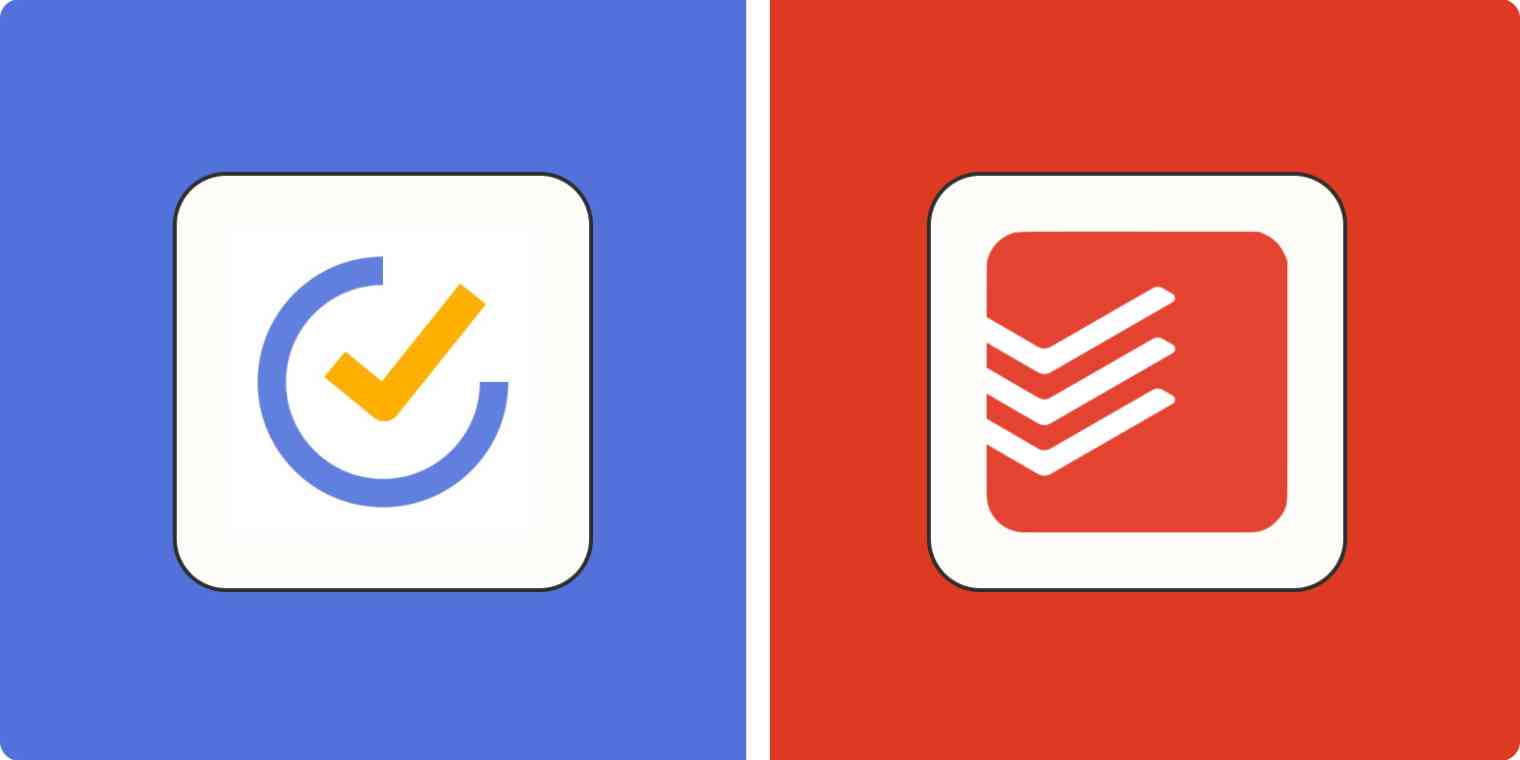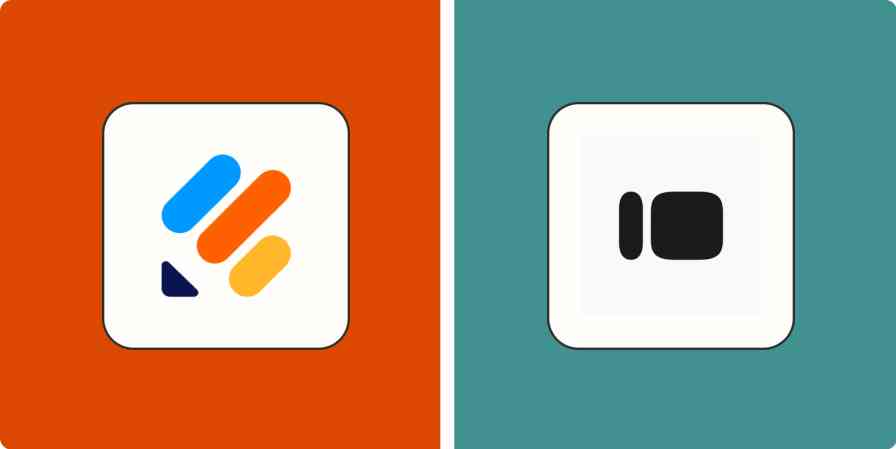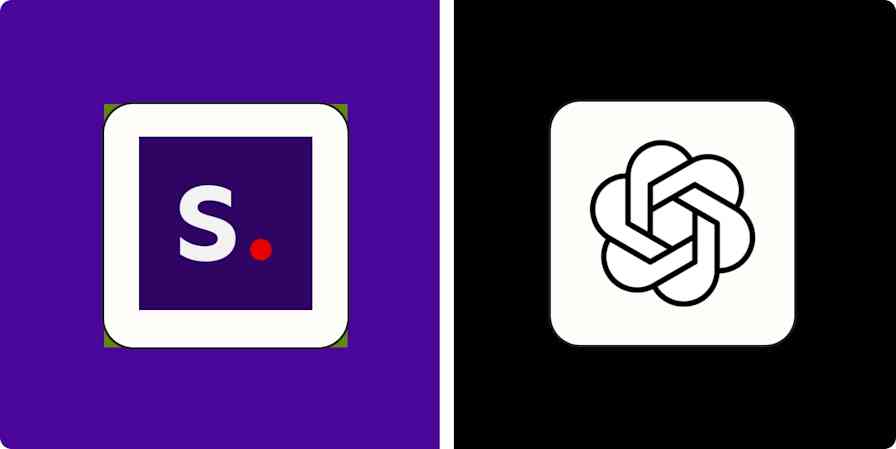Most of us run our lives from a to-do list app. We use it to stay on top of our work tasks, but also for personal chores, movie watchlists, and vacation checklists. Though there are countless to-do apps available, Todoist and TickTick have topped every list for years.
Todoist and TickTick look and function kind of similarly on the surface. But underneath, their approaches to task management are pretty different. I've used both of these apps in the past, and I dove back into all the features to help you figure out which one will work best for you.
Todoist vs. TickTick at a glance
Because they're both to-do list apps, you'll need to dig deep to figure out which makes sense to you. Start with this table, but keep reading for more details on each app's strengths, weaknesses, and approach.
| Todoist | TickTick |
|---|---|---|
Ease of use | ⭐⭐⭐⭐⭐ Clean interface that's easy to learn and navigate | ⭐⭐⭐⭐ Slightly congested design that takes a few tries to follow |
Platforms | ⭐⭐⭐⭐⭐ Mac, Windows, Linux, iPhone, Android, Web browsers, Apple Watch, Wear OS | ⭐⭐⭐⭐⭐ Mac, Windows, Linux, iPhone, Android, Web browsers, Apple Watch, Wear OS |
AI | ⭐⭐⭐ AI Assistant can suggest tasks, break them down, and offer productivity tips | Not available |
Productivity | ⭐⭐⭐⭐ Kanban board, limited calendar view, natural language support, community-made templates | ⭐⭐⭐⭐⭐ Kanban board, Eisenhower Matrix, calendar, Pomodoro timer, habit tracker, custom templates |
Collaboration | ⭐⭐⭐⭐⭐ Project sharing, real-time collaboration, comments | ⭐⭐⭐⭐⭐ Project sharing, real-time collaboration, comments |
Third-party integrations | ⭐⭐⭐⭐⭐ 80+ integrations; also integrates with Zapier | ⭐⭐⭐⭐ 9 integrations; also integrates with Zapier |
Pricing | Free plan available; $4/month for premium perks like AI, calendar layout, and unlimited projects | Free plan available; $4/month for premium perks like unlimited lists, calendar layout, and themes |
Todoist is less overwhelming
Dealing with to-do lists is overwhelming in itself, and Todoist's design does a better job of not adding to that anxiety. It offers a cleaner interface that focuses on its most essential job—to-dos—and neatly tucks away the rest of the more advanced functions. This minimal theme is consistent throughout its apps, which have little to no learning curve and are easier to navigate for beginners.

When you click a task to expand it, for example, Todoist focuses on ensuring the options you'd need frequently, like Reminders, are outright visible, and it nestles the remaining tools under a three-dot menu.

Similarly, Todoist can detect natural language input and allows you to simply write "file taxes in two days" to add a task with a due date in two days. On TickTick, in comparison, you'll have to explicitly mention the date while creating a new to-do, and on an existing task, setting a reminder takes two extra steps.
TickTick isn't too far off from Todoist's no-frills look. Both have a column of your lists and projects on the left and your to-dos on the right on a plain, white background. But TickTick has an extra, minimized sidebar for a range of additional, productivity tools, and when you open a task, it launches and shows its details in a fourth one. That can get a tad intimidating, especially once you populate it with your many lists and items.
On mobile devices, the differences aren't quite as pronounced, but Todoist still does a better job of making everything easy to find. TickTick just feels a touch less consistent in how things are laid out.

Design personalization isn't a strong suit of either of these to-do apps. On each, you get a handful of ways to tweak the app's appearance, but I ultimately prefer Todoist's functional collection of customization options.
You can't set a custom background on Todoist (unlike TickTick), and you can only change the menu accents. But you can decide which default lists—such as Upcoming—appear on the sidebar and the actions you have access to in the new to-do screen. That means you can mix and match menus to personalize the app's interface to your liking.

TickTick has more powerful productivity features
Todoist's simpler design can prove to be a disadvantage when you're looking for more out of your to-do app. TickTick, on the other hand, offers an extra productivity boost apart from the classic to-do experience, which makes it better suited to power users.
TickTick's four-column interface, for starters, is more convenient for multitasking between tasks and projects. You can manage and view a to-do description in its separate column, as opposed to on Todoist, where it opens up in a full-screen panel, hiding the rest of the tasks and projects. You also have a range of editing tools at your disposal on TickTick to format descriptions, and you can even attach editable notes to your tasks—whereas you're limited to the basic text on Todoist, plus file attachments.

TickTick's built-in calendar is also better, especially in the mobile app. Todoist oddly doesn't let you look at your to-dos from all projects together in a monthly calendar—you can only do so for one list at a time. On TickTick, in comparison, you can launch a split view of your tasks and a calendar, and drag down items on dates to quickly build a schedule.

TickTick also had several features you'd normally need another app for. You can track your habits, start a Pomodoro timer, and even pull out tasks in a floating sticky note window on a Mac or a Windows PC. Plus, while both let you organize your tasks on a Trello-style Kanban board, TickTick also has an Eisenhower Matrix tab, where you can arrange them in four quadrants based on urgency and importance.

Both apps could work for teams, but Todoist is better suited for it
While each app allows you to share your lists and collaborate on them in real-time, Todoist's open and flexible tech infrastructure makes it more team-friendly. For one, it supports way more third-party integrations, which enable you to connect and import data from any of the software your team relies on.
When you link it with your Microsoft profile, for example, you can share your tasks or create new ones from your Teams chats. But while TickTick's native integrations are limited, both apps integrate with Zapier, so you can connect Todoist and TickTick with thousands of other apps. Learn more about how to automate Todoist and how to automate TickTick, or get started with one of these pre-made templates.
Add new Google Calendar events to Todoist as tasks
Create TickTick tasks from new Google Calendar events
Zapier is a no-code automation tool that lets you connect your apps into automated workflows, so that every person and every business can move forward at growth speed. Learn more about how it works.
Another Todoist feature teams will find handy is its extensive collection of templates. Though you can create templates for tasks and notes on TickTick, you can't build them for the entire project.

For example, if you're planning to run an event, you can import the Event Planning template in Todoist, and it will automatically fill up a project with lists like "Venue," "Catering," and "Speakers" and the essential tasks under them, like "Pay venue deposit" and "Create a speaking agenda."
Todoist's AI takes a little bit off your plate
One productivity extra that stands out with Todoist is the AI Assistant. It can suggest to-dos to add based on what you're looking to accomplish, break down existing tasks into more actionable items or subtasks, and even give tips in case you are struggling to check them off.
Most of the time, it produces accurate results, and I found it offered a useful starting framework, especially for goals I had little idea about (like running a marathon). But, as is the case with most generative AI, the outputs tend to be a bit vague, and you'll have to tweak them to personalize in your context. Crucially, it can't actually do the work for you—just break a larger to-do into a bunch of smaller suggestions.

Some people will definitely find this feature useful, but it isn't likely to offer you any wildly-out-there ways to approach a project—just maybe save you some time creating subtasks.

Todoist vs. TickTick: Which should you choose?
Picking between Todoist and TickTick comes down to what kind of a to-do app you want—and either one will almost certainly get the job done. For those in search of a platform that focuses on to-do essentials first (while still having the capabilities to expand to numerous third parties and tools), Todoist is the way to go. But if you're a power user who frequently uses advanced task management tactics, you'll feel right at home on TickTick.
Either way, the best strategy for tackling your to-do list is to pick a tool and stick to it. If you can't get things done with Todoist, TickTick isn't likely to magically solve your problems, and vice versa. Whichever app you go with, mastering its tools and understanding its quirks is likely to get you further than constantly swapping between apps.
If neither of these apps hits the spot, you can try one from Zapier's lists of best apps, depending on where you spend your time.






